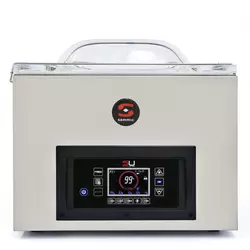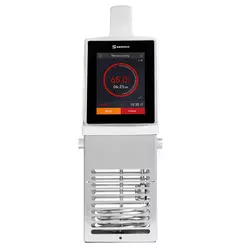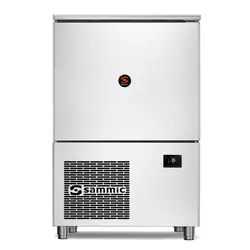
Sous-vide and low temperature cooking training
Learn with Sammic
With Enrique Fleischmann
Discover the fundamentals of sous-vide and low temperature cooking with chef Enrique Fleischmann. A free video training series, divided into 10 chapters, designed for HORECA professionals and enthusiasts of the technique.

Discover the essentials of sous-vide and low temperature cooking
From the foundations of vacuum and low temperature to cutting-edge techniques.
At Sammic, we’ve been receiving queries for years from people eager to learn about vacuum cooking. With this complete video training programme, delivered by our corporate chef Enrique Fleischmann, we want to respond to that demand. Over the course of 10 chapters, you will learn everything from the foundations of vacuum and low temperature cooking to advanced techniques and the professional use of our equipment.
Take the training for free and start exploring everything this technique can bring to your kitchen.
What will you learn?
- History and key concepts
- Process, benefits, and ten golden rules of sous-vide cooking
- Types of packaging
- Risk temperatures
- Types of vacuum bags
- Innovative techniques
- Common issues and solutions
- Thermocirculators
- Other low temperature cooking equipment
- From technique to system
Note: The video transcripts were generated by artificial intelligence and may contain inaccuracies.
1. History and key concepts
- History
- Who introduced it to the kitchen
- Where we are now: Differences between vacuum cooking / sous-vide cooking / low temperature cooking
- Key temperature ranges: sous-vide and low temperature cooking / immediate-use preparations / high-temperature cooking
2. Process, advantages and ten golden rules of sous-vide cooking
- Sous-vide cooking process: cooking / cooling and storage / regeneration / service.
- Advantages of sous-vide cooking.
- Ten golden rules of sous-vide cooking. Ensure impeccable hygiene in the premises, utensils, and ingredients.
Documents
Other catalogues and docs
Topic 2 - Process, advantages and ten golden rules of sous-vide cooking

3. Types of packaging and inert gases
- Types of packaging: Extraction / displacement
- Inert gases for food use: Oxygen / Nitrogen / Argon / Carbon dioxide
4. Danger temperatures, shelf life & temperature charts
- Danger temperatures
- Product shelf life
- Temperature charts
5. Types of vacuum bags
- Conservation bags
- Cooking bags
- Freezing bags
- Metalised bags
- Shrink bags
- Heat-sealed trays
6. Innovative techniques
- Osmosis
- Impregnation / Transparency
- Airy textures
7. Issues and solutions
- Common issues during vacuum packaging and how to solve them.
8. Thermocirculators
- Origin
- Functionality
- Uses
9. Other low-temperature cooking equipment
Steam oven / bain-marie cooker
- Values
- Key differences
10. The future of sous-vide cooking
- From technique to system – practical example: Maruka Gastro
- Digitalisation: JanbyTrack by Janby Digital Kitchen
- Solutions for high production: Up to 200 servings of 200 g per hour
Our product selection

Commercial vacuum packing machines
Highly precise commercial vacuum sealers for foodservice, institutional kitchens and food retail

SmartVide sous-vide cookers
Commercial precision cooker to get the best out of your products

Blast chillers / freezers
Blast chilling, shock freezing and automatic preservation









